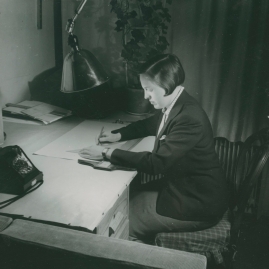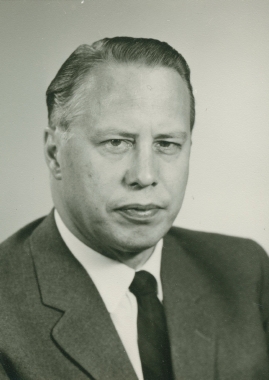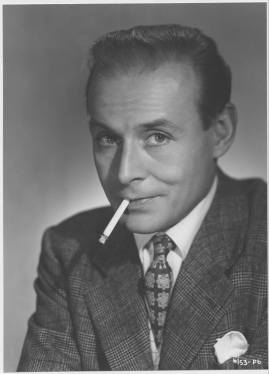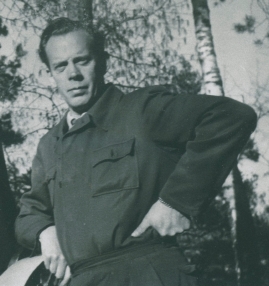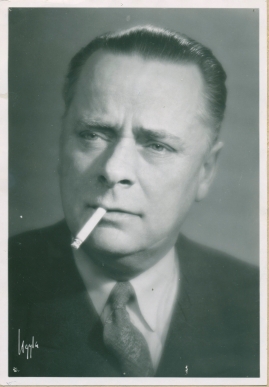Bibi Lindström
Table of contents
- Basic facts
- Links and resources
- Biography
- Awards
- Films
- Original work
- Soundtrack listing
- Groups
Basic facts
Media (1)
| Alternative names |
|
|---|---|
| Art Director | |
| Production Designer |
|
| Show all films | |
| Awards |
|
Biography
Swedish production designer, director and scriptwriter. Born in Arbrå, Gävleborg. Deceased in Stockholm.-Bibi Lindström was Swedish film's most sought-after set designer. During her 40-year career she worked on more than 150 films, most likely an unbeatable record.From an early age she displayed her artistic talents and studied for a short time under the celebrated stage actor Gösta Ekman prior to being accepted at Stockholm's Royal Institute of Art in 1926, where she found her rightful place. Her studies focused on architecture and decoration,...
Links and resources
Biography
Swedish production designer, director and scriptwriter. Born in Arbrå, Gävleborg. Deceased in Stockholm.
-
Bibi Lindström was Swedish film's most sought-after set designer. During her 40-year career she worked on more than 150 films, most likely an unbeatable record.
From an early age she displayed her artistic talents and studied for a short time under the celebrated stage actor Gösta Ekman prior to being accepted at Stockholm's Royal Institute of Art in 1926, where she found her rightful place. Her studies focused on architecture and decoration, and it was there that she met her husband, the architect Viking Göransson, with whom she was married from 1929 to 1953. The two of them worked together on the Stockholm Exhibition of 1930.
Around the same time, silent films made way for the talkies. Previously an importer, Europa Film decided to begin its own production and by 1932 the new studios in Sundbyberg just outside Stockholm were complete. Somebody was needed to take charge of set construction: Lindström applied and got the job.
The label architect could be applied to Bibi Lindström, but in the course of her career the name changed to set designer. The work of a set designer in the theatre is easy to define. He or she is responsible for the backdrops and the scenery against which the actors perform. In film the work is considerably more variable. Apart from scenery construction in the studio, set designers also need to be schooled in interior design, and until late into the 1970s they were also responsible for props. If filming is taking place "on site" the set designer needs to ensure that "reality" is arranged in such a way that it ties in with the screenplay and the relevant time period.
Lindström was not given any unusual tasks to begin with, but when Schamyl Bauman lured her over to Sandrews in the 1940s, her assignments became more exciting. Olof Molander, best known as a demanding director for the theatre, knew what he wanted. Rolf Husberg's The Children (Barnen från Frostmofjället,1945) became the greatest success of Lindström's career to that date. She worked with Hasse Ekman on films including Banketten ('The Banquet,' 1948) and Girl with Hyacinths (Flicka och hyacinter, 1950), and 1951 saw Alf Sjöberg's Miss Julie (Fröken Julie), winner of Grand Prix - the most prestigious prize at the time - in Cannes, plus Arne Mattsson's One Summer of Happiness (Hon dansade en sommar), which was the first Swedish film to win the Golden Bear at the Berlinale. At this time films were starting to be made in colour, and Mattsson's films about the private eye John Hillman, Mannequin in Red (Mannekäng i rött, 1958) and Ryttare i blått ('Rider in Blue,' 1959) presented her with new challenges in the late 1950s.
Ingmar Bergman also came to her when he was making films with companies other than Svensk Filmindustri. Sawdust and Tinsel (Gycklarnas afton, 1953), Brink of Life (Nära livet, 1958), and Persona (1966) were three completely different assignments in which set deign played a crucial part.
The fact that Bibi Lindström was so much in demand and so highly appreciated was largely down to her ability, acquired over the years, to work quickly and effectively. She could also work within a budget without compromising artistic quality. Lindström was also extremely well versed in art history. Later tests of her skills included Alf Sjöberg's The Father (Fadern) and Jarl Kulle's The Bookseller Gave Up Bathing (Bokhandlaren som slutade bada), both in 1969, but she was also very fond of children's films, such as Vi på Saltkråkan ('We on Seacrow Island,' 1968), Ture Sventon - privatdetektiv ('Ture Sventon: Private Detective,' 1972) and Den vita stenen ('The White Stone,'1973), the television series which was to be her last assignment.
Bengt Forslund (2014)
(translated by Derek Jones)
Awards
| Swedish Film Society Prize | Stockholm | 1953 | (plakett) |
|---|
